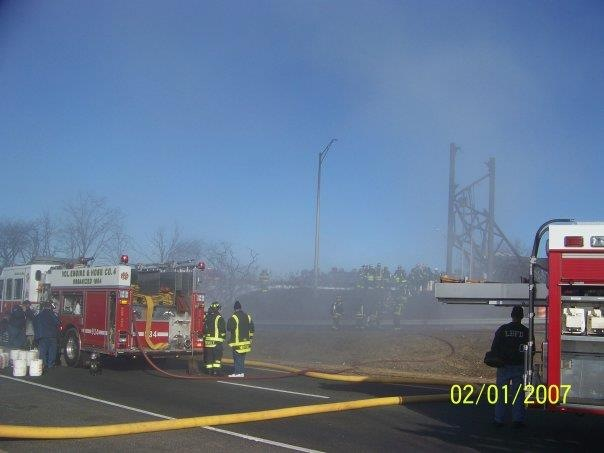bvfdfire
Well-Known Member
- Joined
- May 19, 2010
- Messages
- 165
- Location
- east TX
- Occupation
- project superintendent for highway heavy construct
I always thought more was better for getting water to the fire also, hence, once upon a time we had a 5000 gallon RS9 REFUELER that we repurposed into a tender and it worked very well as a nurse tender and you didn't expect it to get there quickly. 50 mph was MAX speed. Then DOT tore into us for overloading, 66,000 pounds on 3 axles. 260 inch wheelbase. We eventually retired it and downsized to a 3000 gallon tender on a 6x6 chassis. still slow at least it will do 60 downhill. We did not have the tank built by a "fire" builder per say, but they have built numerous fire tenders for area Fire departments. You should also take into account the fact that fire tenders are always loaded, so springs and brakes tend to not last as long as civilian counterparts. fire tanks have cross baffles as well as longitudinal baffles for countering the effects turns at speed, and less than full loads.
If you are looking into any kind of NFPA compliance, remember that they only count 90% of the tank water you have on board, 10% is discounted as waste, spillage and carried back. They also have started to reduce the tender size to 2000 gallons, the theory being that smaller tenders have a reduced learning curve for bringing new drivers into your ranks, smaller seems to be safer. Finally, NFPA limits tender speed to 35 mph when performing tender shuttles to contribute to driver safety!
I hate sounding like a naysayer, but having been a Volunteer firefighter for 23 years and having built several trucks, I would back off the water max and consult a chassis builder about loading. I have read far too many NIOSH Reports dealing with firefighter fatalities and the some of the contributing factors being; overloaded chassis, unsafe speeds, unsafe designs, and inexperienced drivers.
I will take whatever FLAK anyone wishes to send me! STAY SAFE!
If you are looking into any kind of NFPA compliance, remember that they only count 90% of the tank water you have on board, 10% is discounted as waste, spillage and carried back. They also have started to reduce the tender size to 2000 gallons, the theory being that smaller tenders have a reduced learning curve for bringing new drivers into your ranks, smaller seems to be safer. Finally, NFPA limits tender speed to 35 mph when performing tender shuttles to contribute to driver safety!
I hate sounding like a naysayer, but having been a Volunteer firefighter for 23 years and having built several trucks, I would back off the water max and consult a chassis builder about loading. I have read far too many NIOSH Reports dealing with firefighter fatalities and the some of the contributing factors being; overloaded chassis, unsafe speeds, unsafe designs, and inexperienced drivers.
I will take whatever FLAK anyone wishes to send me! STAY SAFE!








